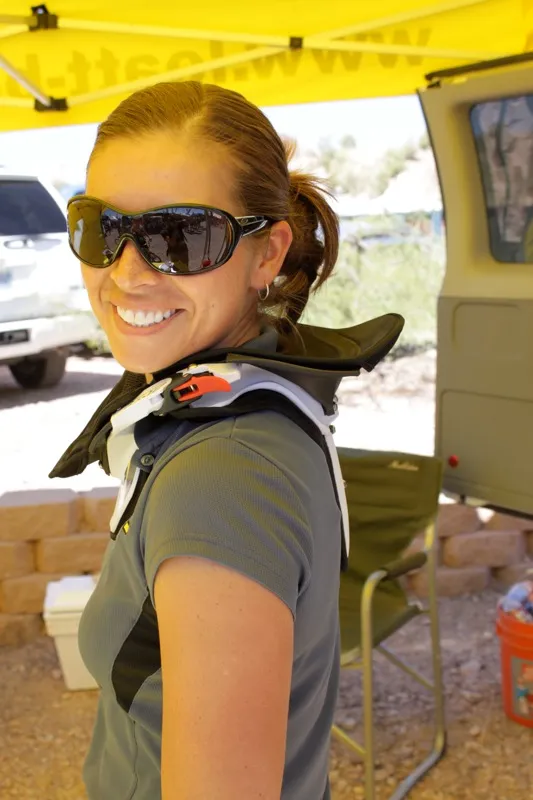As important to many downhillers as their full-face helmet, neck braces are becoming the norm in the bike park and on the racecourse. For 2011, Leatt Brace are introducing three bike-specific models as part of their new DBX line.
Because mountain bikers tend to adopt a more aggressively forward position than motocrossers, the new bicycle braces feature a lower profile padding kit that improves the rider's field of view.
Leatt have two models ready to go – the DBX Ride at US$285 and DBX Comp at $395 – and the flagship carbon DBX Pro will be available in November for $695. Pro models, including a Sam Hill signature version based on the Comp level brace, will be available in the first part of 2011.
The Ride and Comp braces are both made from fibreglass reinforced polyamide resin. The former isn't adjustable, while the latter offers multiple steps of adjustability. Both are offered in two sizes – small and medium – and should fit riders between 100 and 260lb (45-118kg / 7-19 stone).
Choosing between the models has to do with a rider’s body shape, riding style and riding environment. The Ride is made to meet a pricepoint and requires its user to be of average build and be comfortable with the stock, mid-range, settings for the helmet ‘tables’, which make up the top of the brace and interact with the helmet.
The Comp allows adjustment for chest circumference, as well as the height and angle of the lower portion of the brace. It's the better choice for women, juniors and just about anyone else who isn't a 160lb (73kg/11 stone) man of average build.

The rear tail of the DBX Comp brace
The Comp brace also offers adjustment to the height of the tables. According to Teri Gorrell, eastern regional sales manager for Leatt: “You want to be bumping your helmet off the tables one or two times per run.” The Comp model allows you to keep in this range whether the terrain is steep or shallow, and if you change between a downhill bike and a dirt jump bike or BMX.
The safest position for the brace is when it’s closest to the bottom of the helmet and proper adjustment requires you to be honest about your riding style and run it as tight as possible without impeding your range of movement too much.

Teri Gorrell, Leatt's eastern regional manager, models the DBX Comp
The brace works by directing impact energy away from the C-Spine. Leatt call it alternative load path technology. Once the helmet meets the brace in a crash the energy continues past the C-Spine before transferring lower.
Furthermore, the brace has engineered crumple zones that are meant to break at certain pressures. For example, the lower rear brace breaks at 55lb of pressure dispersing energy; it takes three times that much pressure to break your T-7 vertebra.
Leatt say the braces are good for two years of regular use and, unlike helmets, don't need to be completely replaced after crashes. Replacement pieces are offered for all of the brace’s components and crumple zones.
